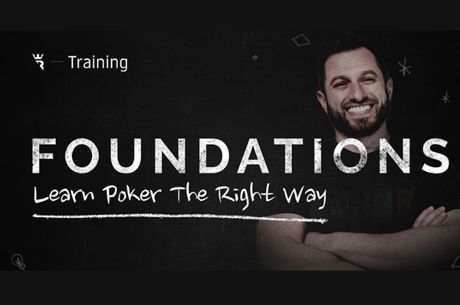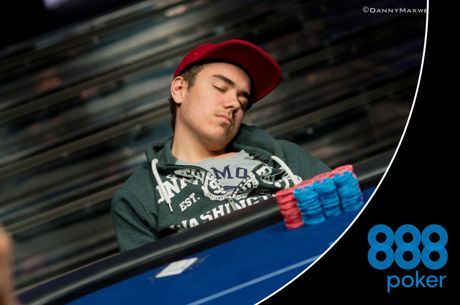Be Cautious When Using Stereotypes in Poker

Stereotyping is something that we tend to look down on in our society, and with good reason. When used incorrectly, it can lead to unfair misunderstandings.
Stereotyping, in and of itself, is not necessarily a bad thing. In fact it is a natural way our brains use prior knowledge to adapt to unknown circumstances. The problem with stereotyping lies in what we do with any new information we obtain after the initial assessment. The fact that many people never reconsider their first impression of someone even after receiving contradictory evidence is the real difficulty.
It has been said that poker is a game of information, but when you first sit down at a table very little information about how your opponents play is available to you. In this situation, you have to use stereotypes as a starting point, but just as in life, you have to be willing to reassess once new information become available.
This summer at the World Series of Poker, I found myself going through this process on a daily basis. Starting from a macro level, I would ask myself (for example) what type of player registers for a $140 daily poker tournament, and form an initial idea of the level of competition I would be facing that day — a decent number of inexperienced players, many of whom probably aren't that high-level in their poker thinking.
From there, with each new opponent, I would start to consider some of the common stereotypes that frequently suggest themselves in poker.
Asian, European, and South American Players
Many players from countries in Asia, Europe, and South America tend to have learned a more aggressive style of poker than your average American player. I've found that those who play this style are much more likely to bluff than the average player I am used to facing in small stakes tournaments in the U.S.
The bluffs these players employ could come in the form of light three-betting, triple barreling, or floating with the intention of bluffing later. One adjustment I make in response is to call down more with my made hands instead of betting or raising them.
Of course, if the particular individual I am facing does not fit this stereotype, then my adjustment can be costly. Bluff catching against someone who is not often bluffing is not a good idea. In fact, we refer to that as being a calling station.
Female Players
Many female players have a reputation for being generally passive and overly tight when they raise. You may see them doing a lot of limping with marginal hands and only raising with a very strong range. Those who play this style rarely ever bluff and generally play "fit or fold" poker.
The adjustment I make as a reaction to this stereotype is to bet at them until they fold. I may start by opening a wide range on their big blind or raising light if they limped in before the action was on me. From there, I will continue barreling light postflop and expect to get more than my fair share of folds by the river. The flip side of this is to be extremely cautious when they do raise or three-bet — it usually means a very strong hand.
It is easy to identify players for whom this stereotype does not apply, because you will notice they aren't limping much and are raise-folding in some spots where they would never do so with a strong hand. Also, if the woman whom you have pegged as tight is aware of her image, she can use it to abuse you with light three-bets of her own and effectively turn you into an overly tight player.
Senior Players
Many seniors have a similar reputation as female players of being overly tight and generally passive. I once made a funny mistake using this stereotype to devise a plan against one older gentleman.
I folded some playable hands to his opens and three-bets. I then raised his big blind and lost most hands postflop assuming he must have hit when he played back at me.
Finally after about 20 minutes, he ordered a cocktail and I heard his European accent. I'd chosen the wrong stereotype and had possibly been bluffed off of a few of those hands! This same situation could arise with a female player. In my experience, the regional stereotypes tend to trump the age and gender ones.
Don't Let First Impressions Fool You
Here's another example of how this sort of stereotyping backfired on me during a recent WSOP Circuit tournament at Harrah's Cherokee.
An older lady sat down at my table. I had no information to go on about her game, so I defaulted to making assumptions based on her grandmotherly appearance. She reminded me a bit of Paula Deen, to give you an idea.
In one of the first hands we played, I looked down at AxKx-offsuit from under the gun. She was two seats to my left, and I noticed her grabbing chips before I had even acted. I took this as a sign of strength given her position and those stereotypes discussed above.
I raised and she just called. With no one else in the pot, I continuation bet on an Ax10x6x-rainbow flop. Again, she called. The turn was a 10x that completed the rainbow (i.e., four different suits). I bet again and this time she raised. I went into the tank and couldn't come up with any hands she'd play this way that I could beat. I decided to make an exploitive fold with one of the strongest hands in my range.
I didn't think much of it until I witnessed another hand she played a few minutes later. A player on my right opened UTG and she three-bet him big. He called and they saw a flop of 10♥9♠4♠. When checked to she bet, and he check-raised her all in. (They had started the hand with effective stacks of about 50 big blinds.)
She went into the tank and started giving the old "Why so much?" speech. Eventually she called him. He had A♠10♠ and she shocked the table when she flipped over 6x4x-offsuit. This hand obviously did not fit the stereotype I had for her, and I instantly regretted my tight fold from earlier.
In hindsight, I was so focused on her gender and gray hair, that I had missed an obvious tell. She was wearing a shirt that said "I don't give a..." above a picture of a rat walking its pet ass on a leash.
How to Spot Outliers
The vast majority of players in small stakes tournaments are not high-level players and in many cases will conform to the stereotypes that I have described. But it only takes one outlier to end your tournament life. If you do not want to get owned by good players who are aware of how these stereotypes affect their image and are capable of using that against you, you have to be able to spot outliers.
As I said before, poker is a game of information. After initially identifying players as a belonging to a certain category in a small stakes tournament, we have to start reassessing that read by observing how they actually play. Many times we won't be able to see the cards they are playing in the first few orbits, but we will see the frequencies with which they do things like limping, raise-folding, three-betting, and so on. Each of these observations should be used to refine the initial read you got from the stereotype.
As we spend more time with players, we will eventually start seeing some of the cards they are playing at showdown. This can really solidify your reads because there are no more assumptions being made at this point. If you see an older gentleman showing down the second-nut flush which he made after three-betting with K♣5♣, you have to abandon completely the stereotype you had of him or he will own you.
Other sources of refining information can include things like what players are saying at the table, the type of clothing and accessories they are wearing, and their interactions with their friends. Observe everything and be creative in how you glean information from your observations, then reassess and adjust as needed.
Conclusion
In poker, stereotyping unknown players is not a bad thing. Before the first hand we see new opponents play, it is all the information we have to go on.
Once they play a few hands, though, you have to be observant about how their actions confirm or deny the stereotype. If you are not paying attention, you run the risk of facing the one player who doesn't fit the stereotype and is capable of turning the tables on you.
And if you're ever in Cherokee, beware of "64o Grandma."
Want to stay atop all the latest in the poker world? If so, make sure to get PokerNews updates on your social media outlets. on Twitter and find us on both and !









